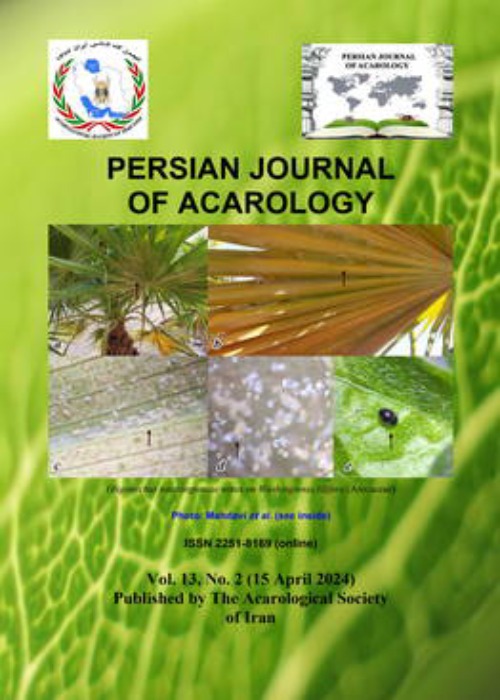Alfalfa Responses to Drought, Salinity, and Herbivory by Tetranychus urticae (Acari: Tetranychidae) and Performance of the pest on Water-Stressed Plants
Stress is hypothesized to be one of the primary abiotic factors that influence the structuring of food webs. Drought and salinity stresses are the most serious induced problems of agriculture due to climatic changes. Considering the global warming and drying of Urmia salt lake in northwestern Iran which can result in salinization of agricultural lands nearby, the focus of this study is to examine the effects of the two above-mentioned stresses on a host plant (Medicago sativa L.) and its pest (Tetranychus urticae Koch) performance. Two levels of water deficit (kept dry for 5 and 10 days and received 50% and 25% of field capacity respectively) and three levels of salinity (100, 200 and 300 mM NaCl) were added to alfalfa plants as stress factors and the following characteristics were measured before and after herbivore infestation: relative water, chlorophyll, carotenoid, protein, proline, malondialdehyde (MDA) and H2O2 contents of leaves and catalase (CAT), ascorbate peroxidase (APX) and guaiacol peroxidase (GPX) enzyme activities. The life table parameters of two-spotted spider mite reared on stressed plants were measured and compared with control. We found that drought and salinity stresses led to a decrease of alfalfa plant growth. Morphological and physiological changes included a decrease of relative water, chlorophyll and carotenoid contents and an increase of protein, proline, MDA and H2O2 contents and APX enzyme activity. The net reproductive rate (R0), mean generation time (T), intrinsic rate of increase (r) and finite rate of increase (λ) were significantly higher for mites grown on control host plants compared to mites grown on stressed ones and were 25.66 offspring/ individual/generation time, 16.38 d, 0.1971 day−1 and 1.2180 day−1 respectively. These parameters reduced significantly in mites grown on stressed host plants; the significant lowest values were recorded for mites grown on host plants subjected to high salinity (300 mM) and were 0.5 offspring/individual/generation time, 14.47 d, −0.0514 day−1 and 0.9502 day−1 respectively. In terms of this experiment, the water stress had a stronger influence on the morphological and physiological characteristics of alfalfa plant compared to spider mite infestation.
- حق عضویت دریافتی صرف حمایت از نشریات عضو و نگهداری، تکمیل و توسعه مگیران میشود.
- پرداخت حق اشتراک و دانلود مقالات اجازه بازنشر آن در سایر رسانههای چاپی و دیجیتال را به کاربر نمیدهد.



